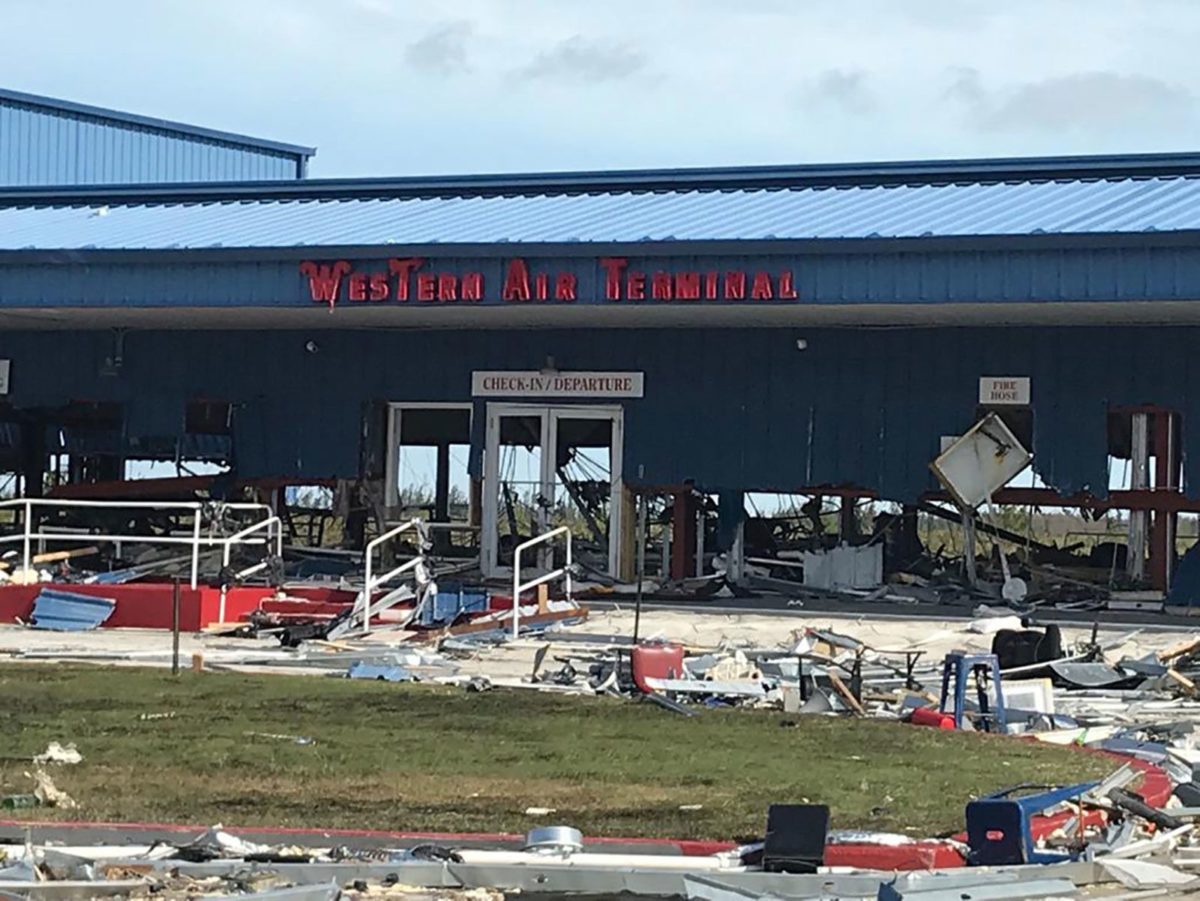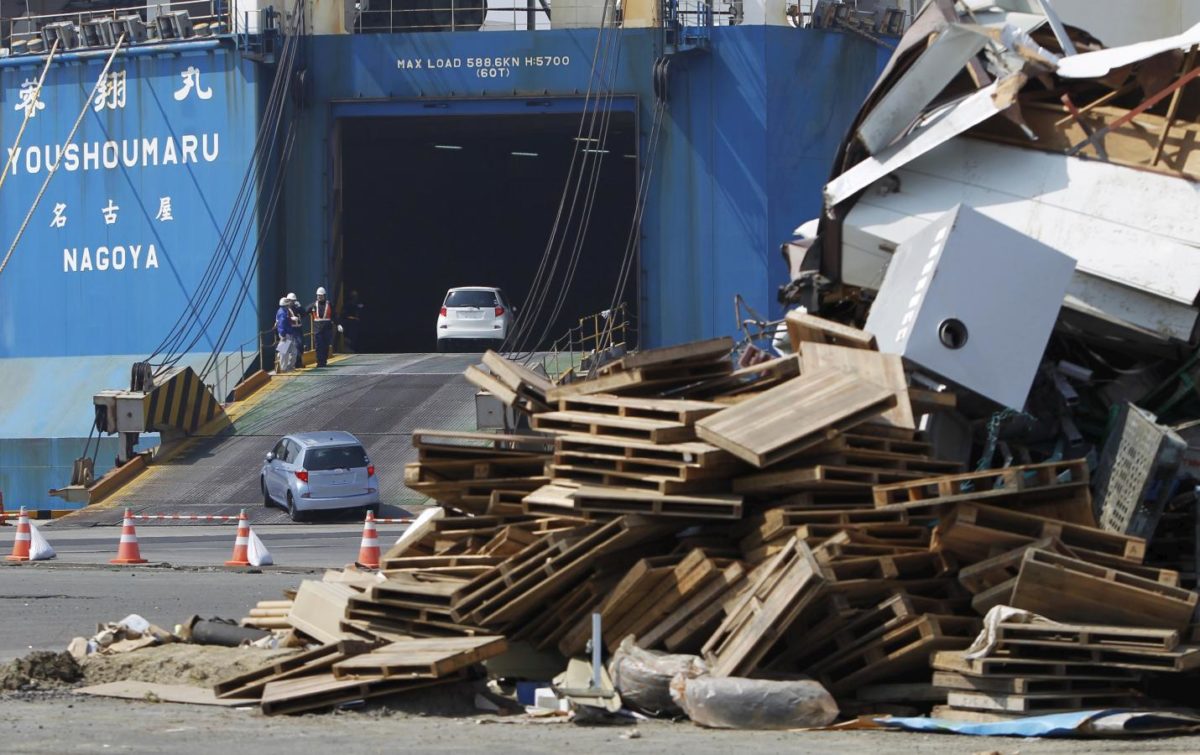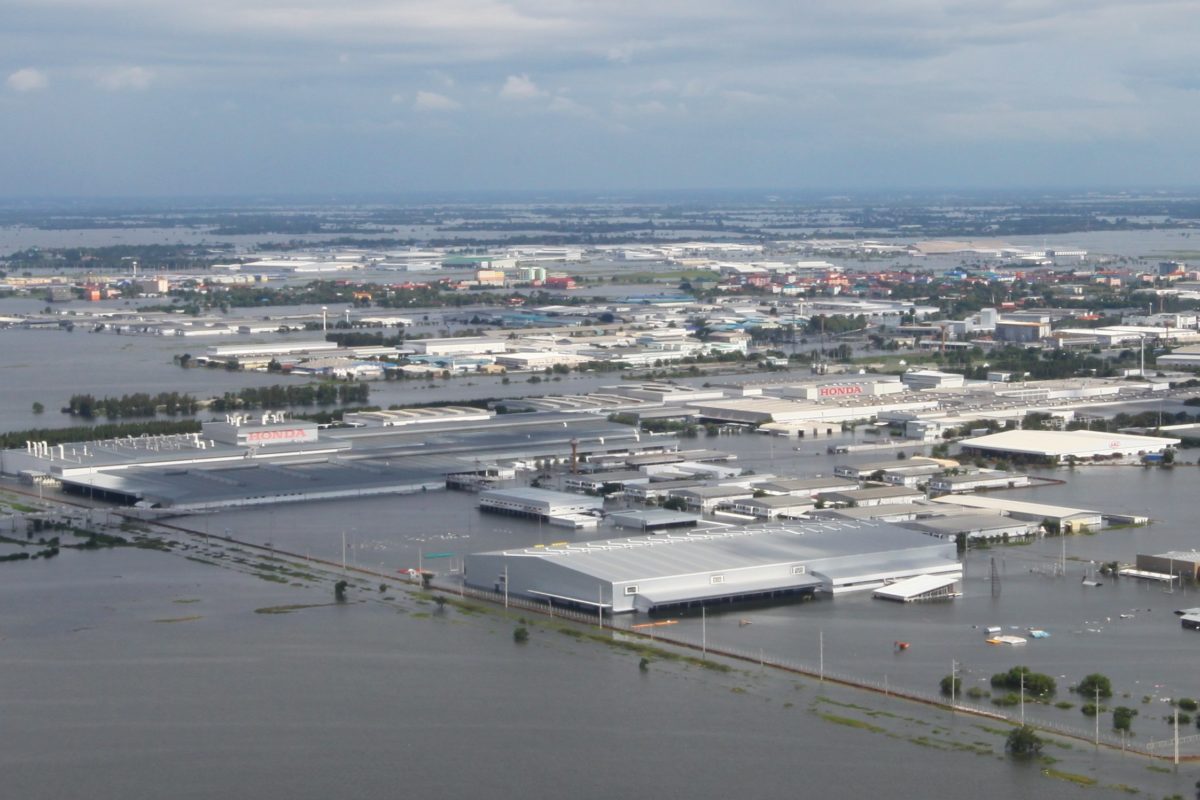
Volunteers receive relief supplies at the New Providence Community Center bound for survivors on Abaco and Grand Bahama islands on September 4.Jose Jimenez/Getty Images
After unleashing its fury on the Bahamas, Hurricane Dorian has passed through North Carolina’s Outer Banks and is expected to hit Nova Scotia by Saturday, September 7. Citizens living in coastal communities have been warned to take safety precautions as they are at the most risk of experiencing strong winds and heavy rain.[1]
Hurricane Dorian will not only threaten all those who live in its path, but the global supply chain too. Natural disasters have threatened the efficacy of logistics throughout history. As a reminder, we can look back to The Great East Japan Earthquake and Thailand’s tropical Storm Nock-ten. With “The Big One” expected to hit Canada’s West Coast in the near future,[2] the supply chain could experience similar, or even worse, results.
As industry experts develop the supply chain, they must plan for worst-case scenarios, including natural disasters. As Hurricane Dorian hurtles toward Canada’s East Coast, the urgency for a resilient supply chain builds. We must look at what the world’s natural disasters have taught us about logistics to date.
HURRICANE DORIAN
As Hurricane Dorian receded from the Bahamas, airlines tried to deliver supplies and food to desperate Islanders.[3] But planning a landing was difficult since the runways at Marsh Harbour were closed. Aircraft also struggled to find a local partner that could assist with the distribution of supplies upon arrival.[4]

Debris left by Hurricane Dorian litters Grand Bahama International Airport in Freeport on September 4.Yasmin Rigby/Handout/AFP/Getty Images
Hurricane Dorian left the Bahamas in its wake as it headed toward the United States, but the logistics and rescue efforts to help save the islands’ victims have only just begun. On September 5, The Guardian stated that “In the Bahamas the storm has left such terrible devastation that the authorities were still struggling to get aid to stricken areas and the death toll is expected to rise, perhaps steeply.”[3]
“Dorian made landfall over Abaco and Grand Bahama on Sunday, then stayed where it was, the nation’s strongest hurricane on record. Category 5 winds of up to 185mph obliterated entire neighbourhoods and triggered a humanitarian crisis.”[3]
It is difficult to say how Hurricane Dorian will affect Canada’s role in the supply chain. As of September 6, “WestJet, Air Canada and Porter have issued travel advisories for Saturday and Sunday, Those airlines are waiving some rebooking fees for flights in and out of several locations in Atlantic Canada this week.”[1]
Since Canada won’t be dealing with the Category 5 storm that hit the Bahamas, it seems logical that not as much damage will be done on the East Coast. But, from observing the chaos of both air and truck logistics in the Bahamas, it’s possible that aircraft could be hindered from delivering the vital goods and services that will be required in the aftermath of landfall.
It’s also important to note that if Hurricane Dorian does touch Canada, logistics providers may struggle to deliver mail and parcels on time. This was already apparent in Florida, where Amazon shut down its facilities as Hurricane Dorian approached. As such, those living in Orlando and Miami waited for delayed mail that would otherwise generally meet deadlines through the global supply chain.[5]
THE GREAT EAST JAPAN EARTHQUAKE
In 2011, the 9.0 magnitude Great East Japan Earthquake and Tsunami destroyed the Northeast Coast of that country, ruining many nuclear reactors. This region was also home to several auto manufacturing facilities used to support the global motor vehicle supply chain. The forced closures of specialized chemical, paint, and parts factories in Japan directly affected North American car manufacturers as they struggled to replace the downed sources.[6]

Newly produced Toyota cars are driven to a cargo ship at Sendai port in Sendai, Miyagi prefecture, after the area was devastated by the March 11 earthquake and tsunami, April 16, 2011 file photo. REUTERS/Toru Hanai/Files
With many logistics operations reliant on the auto industry, the supply chain was inevitably slowed since automakers couldn’t import or export parts. One year after the tsunami, the Vehicles Technologies Office reported that “Through March 31, 2012, the earthquake and tsunami cost the seven largest automakers in Japan an estimated 5.6 billion dollars. More losses will follow as actions such as plant relocations and manufacturing changes continue to take place to limit disruptions from future disasters.”[7]
According to Reuters, some automakers have redesigned their manufacturing processes to lessen the impact of a natural disaster in the future. “Since the 2011 disaster, global auto suppliers have changed the way they produce and source the 30,000 parts required to assemble a single car, including raising stocks, diversifying production and creating alternative manufacturing capabilities.”[8]
Many automakers have developed strategies to lessen the logistical and financial burden of a natural disaster. For example, Nissan requires suppliers to include alternative sourcing plans and has, along with Toyota, created their own supply chain database.[8]
THAILAND’S TROPICAL STORM NOCK-TEN
In 2011, Tropical Storm Nock-ten flooded Thailand, resulting in more than 350 deaths. This natural disaster also delivered a blow to hard drive manufacturers.[8] On October 25, 2011, the Guardian speculated that “Thailand is the world’s second largest maker of hard disk drives (HDD) after China, and makes about half of global output taking place there. The damage caused by flooding could keep factories closed or hobbled for months, analysts and executives reckon.”[8] The inability to export hard drives meant the electronic supply chain would be impacted since “future sales could be affected by the slowdown in supplies.”[9]

Flood waters affect multiple areas of Thailand during the Humanitarian Assessment Survey Team’s aerial flood assessment north of Bangkok, Oct. 16. (U.S. Marine Corps photo by Cpl. Robert J. Maurer/Released)
Western Digital, a HDD manufacturer, is a large contributor to the electronics supply chain. But because of Thailand’s floods, it had to put its business within the country on hold.10 According to Supply Chain Digital, this put the electronic supply chain at risk. “As the world’s largest provider of hard-disk drives, a hiccup in the Western Digital operation could have enormous supply chain impacts from all over the world. Approximately 60 percent of the company’s product comes from its Thailand plants, adding to the dire situation.”[10]
____
We may fail to immediately recognize that where there is destruction and death, the global supply chain is also at stake. Although we can’t predict natural disasters, logistics companies may have more control than they think, according to MHL News.
“You should aim to achieve visibility and transparency into all elements of your supply chain, including the status of vendor bookings, purchase orders and the movement of inventory, using an automated system which updates data instantly rather than relying on manual updates which are slow, error-prone and out of date.”[11]
“Accessing real-time data can help companies to better calculate their risks. A digital supply chain management platform that monitors tens of thousands of data sources in real time—including weather feeds, port closures, traffic congestion and so forth—can immediately inform users where a supply chain disruption may occur and how that could affect their business.“[11]
